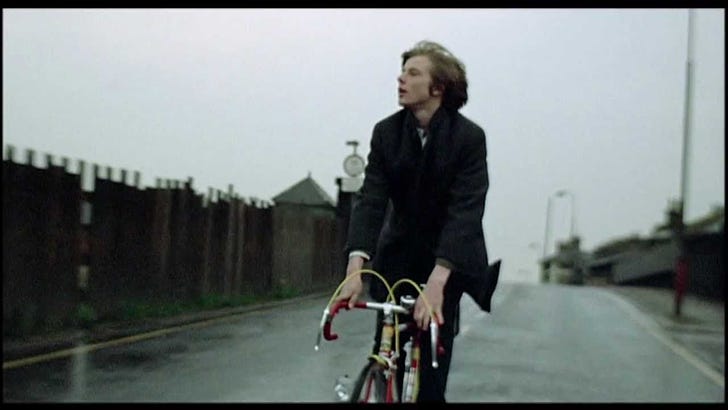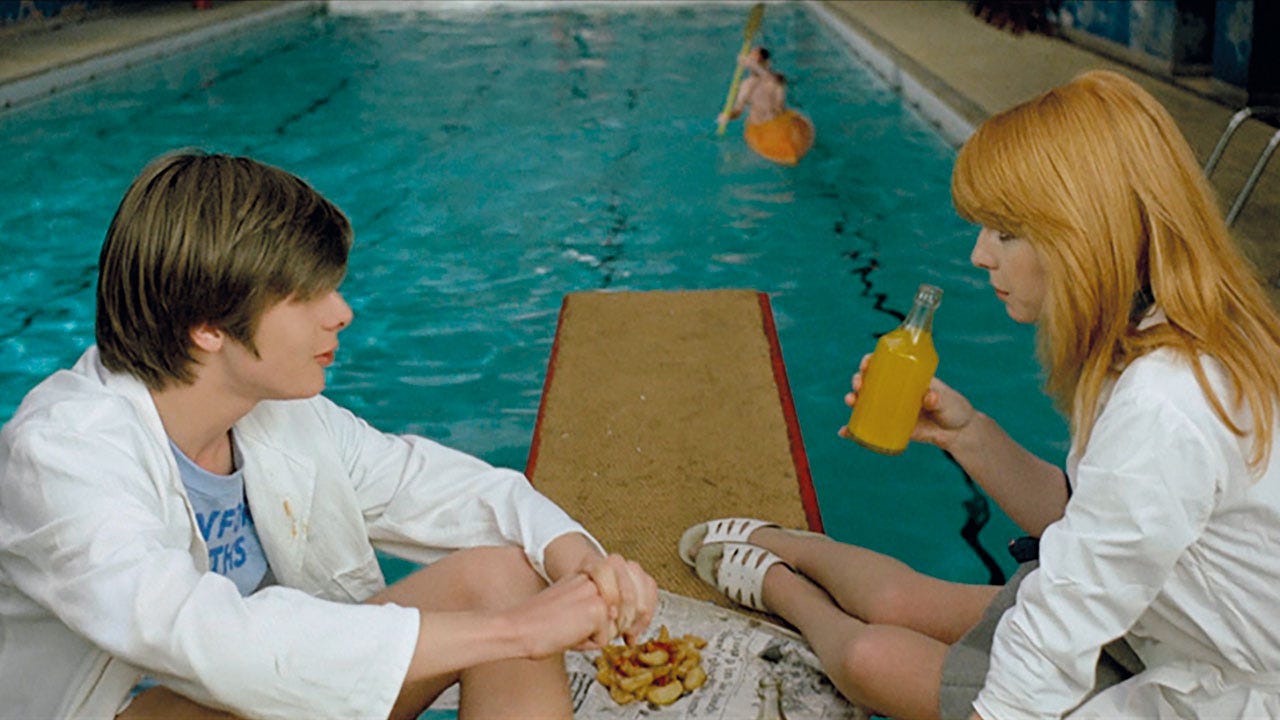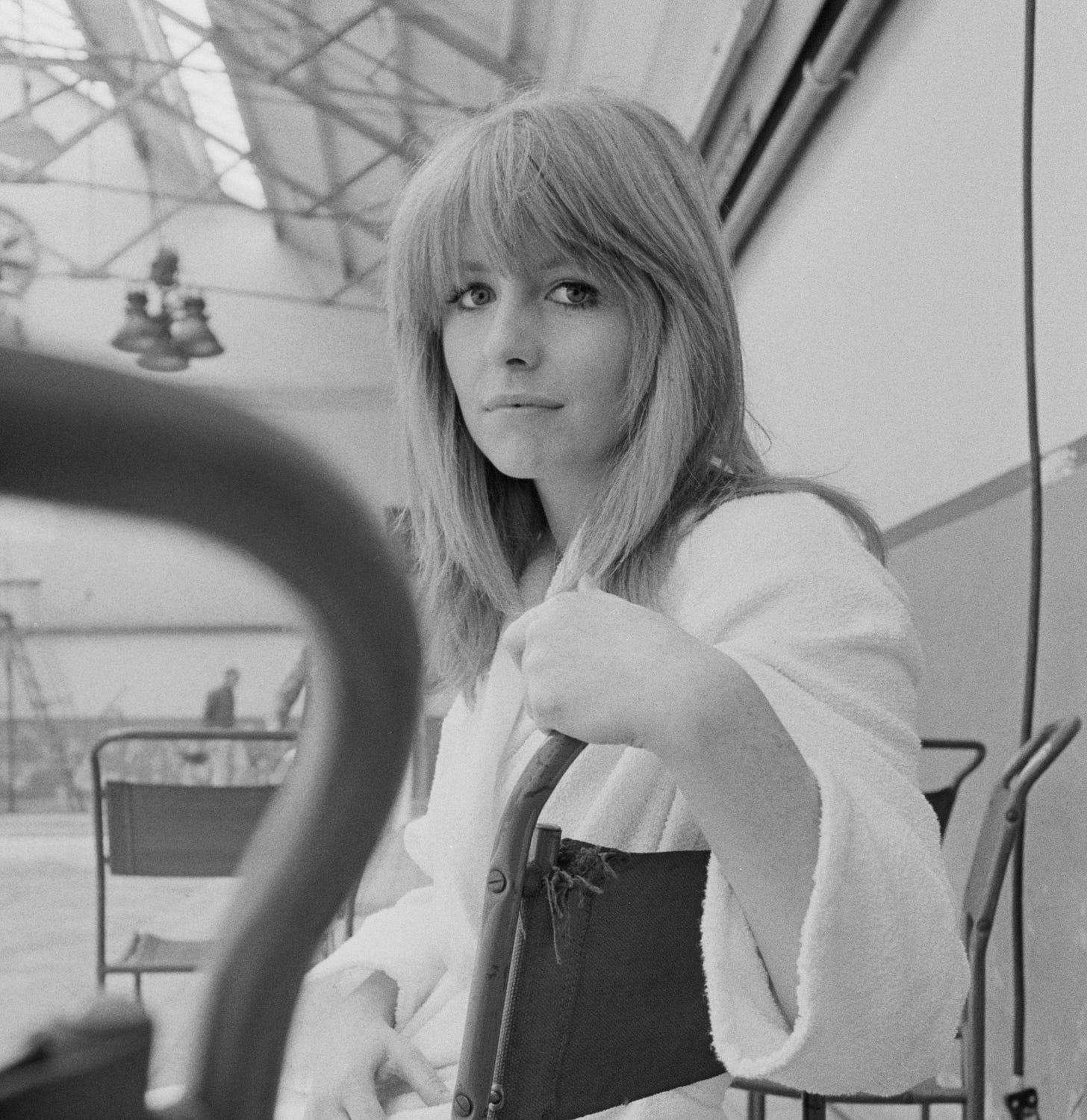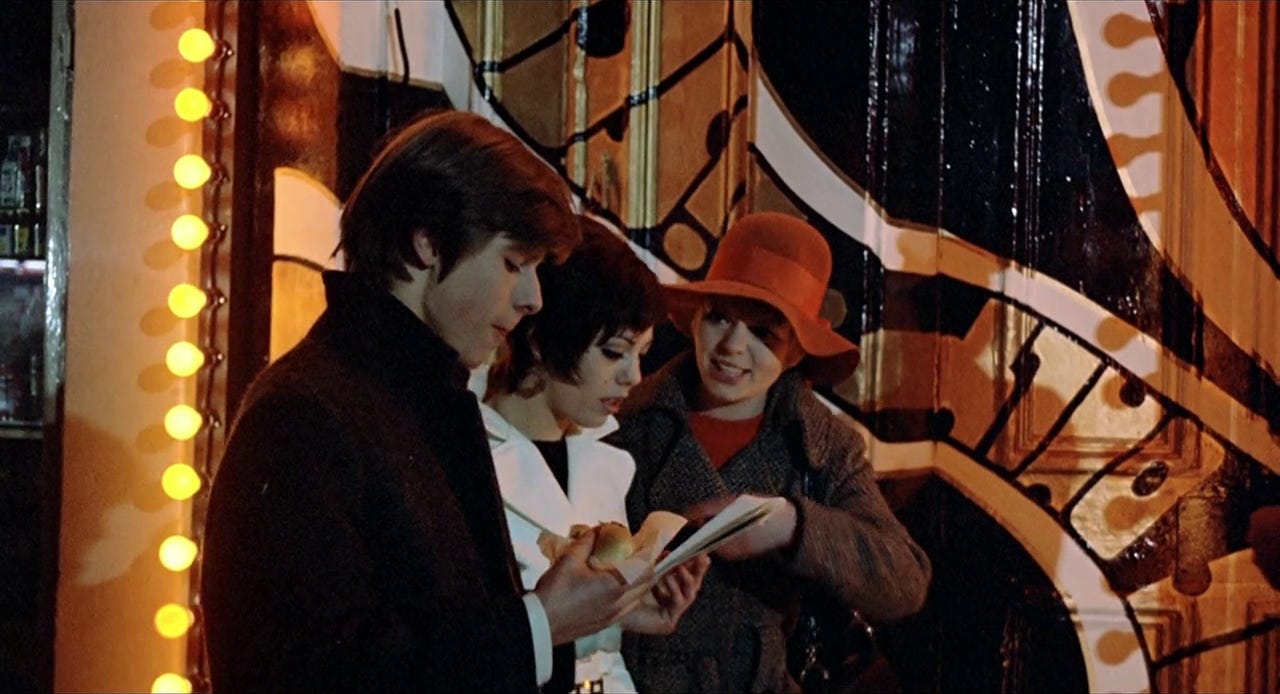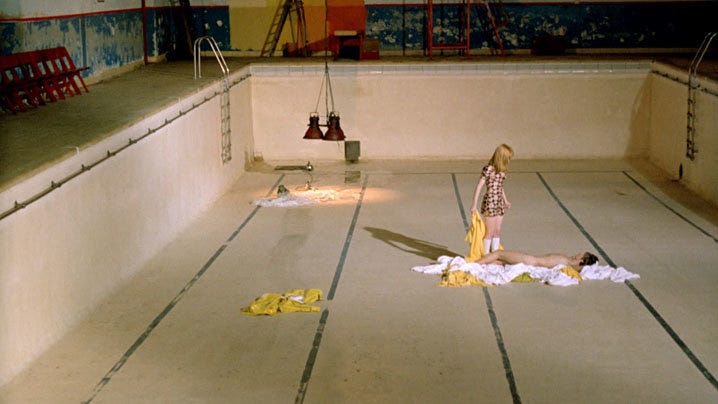Electric Theatre: Deep End (1970)
Rob Hinchcliffe on Jerzy Skolimowski's messed up story of adolescent love
Electric Theatre is our rotating column, where we look at London on film. It’s an opportunity to see how the city has been represented on the big screen over the years, how its landmarks and structures have been used (and abused) and how various genres and directors extract wildly different performances from its streets.
For this instalment, LiB editor Rob Hinchcliffe goes for a dip in the technicolour mind of a perverted little monster, with Jane Asher, Diana Dors and Cat Stevens along for the ride.
Welcome to the Electric Theatre. Please turn off your phones and refrain from talking for the duration of the entertainment.
“There's never been a colour movie I've freaked out over except one: this thing called Deep End." – David Lynch
When Jerzy Skolimowski was born in Poland in 1938, the Academy Awards were less than ten years old.
Later this week, the 84-year-old director will be travelling to LA to attend the 95th Oscars ceremony where his incredible new film, EO will compete as Poland’s entry for the Best International Feature Film.
The film has already succeeded in winning the Jury Prize at Cannes as well as putting Skolimowski’s name firmly back in the mouths of both critics and audiences, prompting a thorough BFI retrospective of the director’s work.
The BFI have got plenty of material to work with. Skolimowski began writing screenplays in the early 60s (after abandoning his initial dream of becoming a poet), before hitting a directing streak in the middle of the decade when he delivered five films in two years. The last of these (Ręce do gory - also known as Hands Up!) succeeded in getting him expelled from his home country
As a result, Klimowski swapped communist Poland for swinging London, where he found a flat in the same building as Jimi Hendrix and set about writing his first English-language film, the extraordinary Deep End.
Bildungsroman baths
If you just watched that original trailer, you could be forgiven for thinking that Deep End is a bawdy sex comedy in the style of a Confessions of a Window Cleaner. Even if you watched the first twenty minutes of the film itself, you’d could half expect Terry Thomas to stroll on twirling his waxed moustache.
That’s because Deep End is, at its heart, a coming-of-age story about floppy-fringed, fifteen-year-old Mike (John Moulder-Brown, himself only sixteen at the time) experiencing lust and obsession for the first time.
The setting Klimowski chooses for this journey into adulthood is a suburban public baths. At that time, public baths were washhouses as well as swimming pools, and these echoing Victorian buildings would be full of people doing their laundry and bathing, as well as learning the front crawl and divebombing.
Jane Asher, fresh from breaking off her engagement with Paul McCartney, plays Mike’s co-worker, Susan (every British film of the late 60s and early 70s seemingly has a character called Susan), and it takes about five seconds for Mike to become utterly besotted by her heady mix of world-weary cynicism, natural beauty and smirking mischievousness (not to mention her hair - Asher’s hair should have got a separate credit in this film).
Before Mike has even picked up a mop, Susan is informing him that he can earn a few extra bob by obliging “ladies of a certain age” and, right on cue, in walks a forty-year-old Diana Dors to give one of the performances of her career as a voluptuous, vampish woman with an unhealthy George Best obsession.
After emerging from the clutches of Dors, things only get worse for Mike when he discovers that, not only is Susan engaged but she’s also cheating on her fiancé with an older, married man who used to be Mike’s PE teacher (and who is a complete creep to boot).
The rest of Deep End’s 90-minute running time is spent watching Mike ignore every single one of these red flags and instead following his hormones through a series of hallucinatory, humiliating and highly entertaining/erotic/tragic set pieces that also happen to be some of the most beautifully-constructed pieces of British cinema of the last fifty years.
Refrain from heavy petting
Except, of course, Deep End isn’t really a British film. It’s a US/German co-production, that was shot largely in Munich. As a result, many of the atmospheric bath interiors were filmed in the baroque majesty of Müller’sches Volksbad baths and the scene in which Mike inexplicably gatecrashes a cross-country run takes place in the city’s English Gardens.
Thankfully, Klimowski was smart enough to realise that he couldn’t create what has since been called “one of the most acute screen portraits of London,” without filming in the city itself, and so we get to see Mike cycling to work through the streets of Stratford, as well as some glimpses of the nearby Cathall Road baths.
But it’s an extended and surreal sequence in Soho where Klimowski really lets London shine.
After following Susan and her fiancé into the West End one evening, Mike finds himself unable to charm himself into the trendy Berwick Street club where the pair are dancing the night away. Instead, he’s forced to kick his heels in the red-light district.
While wandering around Walker’s Court Mike buys multiple hot dogs (with mustard) from a street cart manned by Bert Kwouk (not yet famous for his role as Cato in the Pink Panther series), pays a visit to a brothel where he’s offered a discount by a prostitute with a broken leg (her cast is signed by a West Brom player and she has an intricate system of pulleys to open the door and to use her record player), chats to some Liverpudlian tourists, ignores some street preachers and finally steals a life-size cardboard cutout of a topless model called ‘Angelica’ who looks an awful lot like Susan.
All of this plays out in extended, hand-held tracking shots, the camera dancing around Mike as he ducks around grimy street corners, dodging policemen and pimps (“18 beautiful girls, nothing on and nowhere to hide”). While, in the background, the churning crash of CAN’s 14-minute proggy opus, Mother Sky fades in and out of the scene, its relentless ‘brown acid’ tempo adding a sense of manic, psychological catastrophe to the whole thing.
This segment ends with Mike following Susan to Leicester Square station, where he just about manages to squeeze his half-naked cardboard cutout onto a Tube carriage so he can confront Susan with it. Later that evening he breaks into the locked-up baths so he can float naked in the pool on top of his 2D love, while Cat Stevens’ But I Might Die Tonight bobs around him.
And in the space of an hour, we’ve gone from Carry on Lifeguard to something more akin to Godard or Truffaut.
Dead pool
It’s hard to sum up why Deep End is such a great ‘London film’, because what makes it so special and unique is the glorious, carefully created chaos that runs through every beautifully designed frame.
The production design on this film is astonishing, with Skolimowski using bold, clashing colours to highlight the rain-sodden streets and clammy, crumbling bathhouse walls. But it never feels unreal or prissy (I’m looking at you, Wes Anderson), it just adds a patina of faded glamour and barely-restrained bedlam to every scene.
Add to that the restless camerawork, the music (there’s a reason Cat Stevens went on to soundtrack another offbeat love story featuring a neurotic teen) and the semi-improvised dialogue that threatens to go off the rails at any minute, and you have film that manages to capture every shade of London’s lightning in its bottle.
Deep End gives us the showy glamour of London alongside its more tender, delicate sides as well as its ugly, ruthless edges; and then it shows you how hypnotic and deadly that mix can be.
Rob Hinchcliffe is the editor of London in Bits. He lives in South East London and he has his 25m swimming badge.
Deep End is showing at the BFI as part of their Jerzy Skolimowski retrospective. Tickets go on sale tomorrow.

